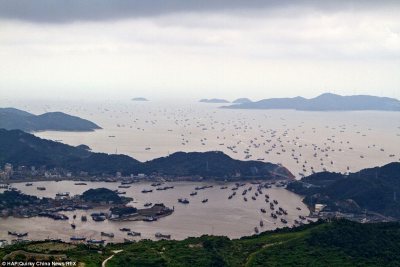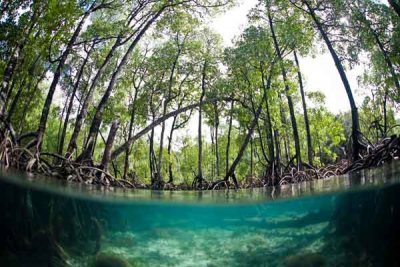Marine Pollution
BIO 209
Student Blog Series
Hannah Goldberg and Grace Wright
Overexploitation of fishing has thought to be linked to a decrease in biodiversity of demersal fish in the East China Sea (ECS). However, a study done in the summer of 2008 determined that there were other environmental factors that were leading to the negative impacts on the demersal fish community. In 1998 the Chinese government declared a ban on fishing in the ECS from the months of June to September, but the ecological condition of the fish was still not improving. Thus, this study sought to find if eutrophication, hypoxia, or other environmental factors as a result of anthropogenic pollution were contributing more to the stalled recovery of bottom-dwelling fish. Eutrophication is defined as the over enrichment of nutrients, mostly phosphate and nitrogen, which can lead to algal blooms and depleted oxygen levels in the ocean, which is known as hypoxia. These factors do not provide an ideal habitat for species of fish, especially demersal fish because they live in a low oxygen environment to begin with. To test such environmental factors, bottom trawl surveys were conducted in five different sections along with five corresponding environmental observation sites, where sediment, dissolved oxygen, and nutrient concentration samples were taken. These surveys were done during the summer fishing ban in both prohibited and exploited areas of the ECS. Results found that sites inshore within the prohibited fishing zone had smaller-sized species of demersal fish, higher nutrient concentrations (particularly phosphate, nitrogen, and silicate), and lower dissolved oxygen levels. It was also found that most demersal species have adverse relations to high levels of nutrients and low levels of dissolved oxygen. Thus, this study concluded that it was eutrophication and hypoxia that were ultimately leading to the decrease in biodiversity of demersal fish in the ECS within the banned fishing zone. Since eutrophication was most likely amplified because of overfishing, it is important to find a solution to this ecological problem in the ECS that takes into account both fishing and environmental factors. Additionally, there are even more factors involved that could affect the recovery of these fish communities, such as increasing ocean temperatures and jellyfish blooms.
Mangrove forests have the highest net primary productivity of any ecosystem. They serve as nurseries for the young fish and crabs that live within among their roots and also for those animals that will eventually travel out into the ocean. Mangroves provide food sources for coastal communities as well as protection from coastal storms and floods. This study conducted in 2006 in Mozambique and Kenya helps to illustrate the mangroves pollution buffering capabilities. It is previously known that the sediments beneath mangroves have shown to serve as filters for both phosphorus and nitrogen. The roots of the mangrove contain nitrogen fixing bacteria to assist in the removal of nutrient waste in the water. In the paper, “Effects of urban wastewater on crab and mollusc assemblages in equatorial and subtropical mangroves of East Africa,” Researchers sought to investigate “the differences in macrobenthic patterns between peri-urban mangroves, impacted by sewage disposal, and non-urban sites with no evident wastewater disposal, in East Africa.” Data on the effects of wastewater and nutrient overload in sites adjacent to cities, could yield possible implications for mangroves as intentional waste disposal sites. Each mangrove site consisted of two measurement areas—a landward sandy belt that flooded only during spring tides, and a seaward muddy belt that flooded twice a day during high tides. Results showed a significant increase in the biomass of crab populations in the peri-urban mangroves in both countries, which authors said could be attributed to increased nutrients and blooms in benthic diatoms and bacteria the crabs feed on. This could disrupt the ecosystem balance in the mangroves because crab species are responsible for control of algal mats and growth and regrowth of mangrove saplings. The second significant result was a decrease in gastropods in peri-urban sites, especially the mud whelk. Looking at these two major impacts on species, the scientists concluded that at this stage, we are not fully aware of the possible impacts wastewater may have on mangroves used as filters. Previous studies in nineties, and more recently in 2008, show that peri-urban mangroves are susceptible to not only nutrient overload, but also metals, hydrocarbons and pesticides. Mangrove species vary and other elements are variable depending on location and wastewater composition, so it is unwise assume buffering capabilities from the little research done.

